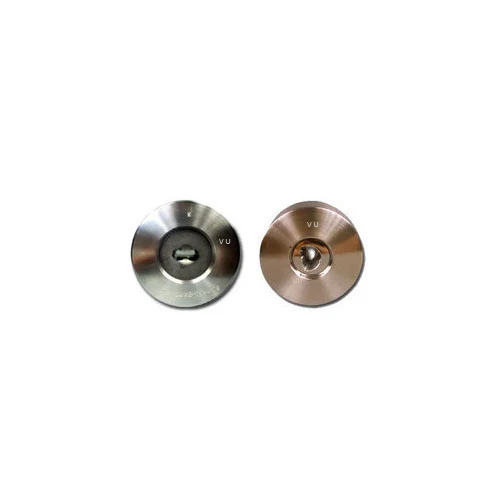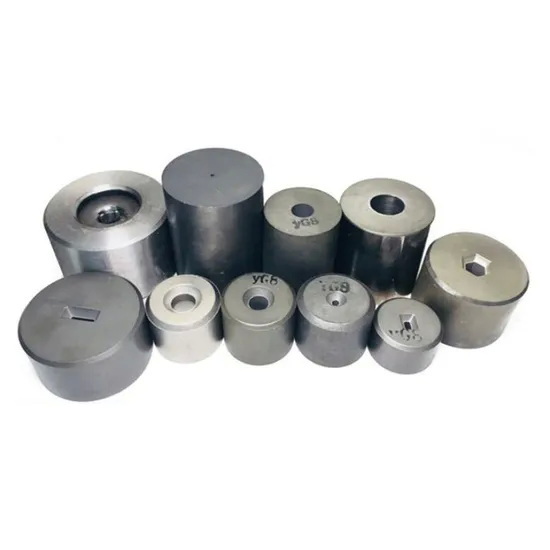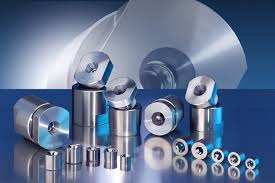Content Menu
● Understanding Carbide Drawing Dies
● Product Range from UK Carbide Drawing Dies Manufacturers and Suppliers
● The Carbide Drawing Die Manufacturing Process
● Surface Engineering and Die Finishing Techniques
● Technical Challenges and Engineering Solutions
● Market Dynamics and Industry Trends
● Key UK Carbide Drawing Dies Manufacturers and Suppliers
● Maintenance, Troubleshooting, and Upgrade Services
● The Future: Innovation and Sustainability
● Conclusion
● Frequently Asked Questions (FAQ)
>> 1. What are the main advantages of using carbide drawing dies over traditional steel dies?
>> 2. How do I choose the right carbide drawing die supplier?
>> 3. Can carbide drawing dies be refurbished or repaired?
>> 4. Do UK carbide die suppliers provide on-site technical support?
>> 5. What technical innovations are shaping the future of carbide drawing dies?
Carbide drawing dies are critical industrial components enabling the precise shaping, reduction, and quality assurance of wire, tube, and bar products. In the United Kingdom, numerous leading manufacturers and suppliers blend tradition, technical innovation, and service excellence—making the UK a prime hub for high-performance carbide drawing die solutions across global markets.
Carbide Drawing Dies Manufacturers and Suppliers in the UK deliver advanced tooling to industries including construction, aerospace, automotive, electronics, and OEM manufacturing. These companies serve as strategic partners for wire and tube mills, offering tailored engineering support, rapid product development capabilities, and compliance with stringent international standards.

Understanding Carbide Drawing Dies
Carbide drawing dies are engineered from high-strength tungsten carbide, celebrated for extreme hardness, heat resistance, and superior durability under production stress. Tungsten carbide, often bonded with cobalt, provides a material matrix that outperforms steel or alloy dies in both longevity and performance. This allows for repeated wire, rod, or tube passes through die holes of precise dimension, facilitating the manufacture of products with consistent diameter, surface finish, and tensile characteristics.
The design and utilization of carbide drawing dies are essential for modern production lines that demand close tolerances, fast changeovers, and cost control. Applications include the drawing of ferrous and non-ferrous wires, steel and stainless-steel tubes, precision rods, and specialty profile products used in industries as varied as construction reinforcement, high-voltage lines, bridge cables, electronics, and specialty alloys.
Product Range from UK Carbide Drawing Dies Manufacturers and Suppliers
UK carbide die suppliers provide an expansive portfolio, engineered for broad market needs and customized applications alike:
- Standard and Custom Wire Drawing Dies
For round, square, flat, and complex wire profiles, ensuring tight tolerances and high surface quality.
- Tube and Bar Drawing Dies
For seamless and welded tubes, heavy-gauge rods, and precision bars in a wide range of metals.
- Profile and Shaped Dies
Custom dies for non-standard and multi-sided profiles, serving advanced electronics, medical and aerospace fabrication.
- Extrusion and Swaging Dies
Used in metal extrusion, spinning, shaving, and surface treatment applications.
Manufacturers also support after-market services such as die refurbishment, recoating, sizing band reformation, and technical troubleshooting, further enhancing lifecycle value for industrial buyers.
The Carbide Drawing Die Manufacturing Process
The journey from tungsten powder to a high-precision carbide die involves several meticulously controlled steps, each crucial for the final product's integrity and performance.
1. Powders and Blending
The process starts with high-purity tungsten carbide powder mixed with a cobalt binder. Advanced blending techniques ensure homogeneous distribution of grains, essential for uniform physics and microstructure.
2. Compaction and Pressing
The blended powder is compacted into a steel mold at high pressure, forming a “green” blank—an initial shape that will become the die core.
3. Sintering
Blanks are sintered in a furnace at temperatures over 1400°C. The grains fuse, resulting in a dense, strong, and near-complete carbide piece. Sintered components are carefully cooled to minimize internal stresses.
4. Grinding and Shaping
Post-sintering, the die core must be ground to precise outer diameter tolerances. This requires diamond grinding wheels and precision fixtures. The core is then mated with a steel or alloy casing, sometimes with an engineered interference fit to apply optimal pre-stress during operation.
5. Insertion and Assembly
The carbide blank is inserted into a matched steel sleeve or housing. Methods include cold pressing (room temperature, for tight tolerance and energy efficiency) and hot pressing (thermal expansion for large parts).
6. Machining and Polishing the Working Profile
Advanced machining creates the exact wire or tube passage profile—typically a conical entrance, sizing land, bearing surface, and exit. Diamond lapping and polishing achieve mirror finishes inside the die—vital for surface quality and reduced friction during drawing.
7. Inspection and Quality Assurance
Critical dimensions, surface roughness, and roundness are inspected using metrology tools such as microscopes, laser measuring devices, and CMMs (Coordinate Measuring Machines). Each die is annotated for traceability and quality compliance standards.
Throughout, UK manufacturers integrate automation and CNC technology to maximize consistency, minimize errors, and enable repeatable, high-volume outputs.
Surface Engineering and Die Finishing Techniques
Surface preparation and finishing are crucial to die longevity and tool effectiveness. The die's internal profile faces substantial wear from abrasive wire contact, drawing lubricants, and mechanical stress.
Primary Steps in Surface Finishing Include:
- Diamond Lapping: Utilizes various grades of diamond slurry on plates and cloths to remove microscopic imperfections and produce a final polish. This reduces friction and ensures mirror finishes necessary for demanding wire and tube applications.
- Specialized Polishing Compounds: Silicon carbide or boron carbide, mixed with oils, are sometimes used for initial lapping, with fine diamond powder finishing.
- Measurement of Roughness: After polishing, Ra (average roughness) is measured, targeting values below 0.01 microns for the best possible wire output.
A precisely polished die reduces material adherence, resists abrasive wear, and extends service life—delivering maximum cost performance for the user.

Technical Challenges and Engineering Solutions
The ultra-high hardness that gives carbide dies their value also creates engineering and maintenance challenges. The process encounters issues such as:
- Shrinkage Variance During Sintering: Different batches of die cores may shrink by varying degrees, leading to dimensional variance and non-uniform prestressing inside die housings.
- Interference Fit Tuning: Matching the steel sleeve and carbide core demands precision mathematical calculation and accurate machining for optimal pre-stress—essential to die lifespan and product quality.
- Thermal and Mechanical Stress: During repeated production cycles, the die experiences rapid heating/cooling, high pressure, and abrasive wear, all contributing to eventual microcracks or surface spalling.
Solutions from top UK manufacturers include better powder preparation and computer-modeled pressing parameters, CNC-based grinder fixtures, improved steel alloys for die housings, and pre- and post-production inspection using scanning electron microscopes (SEM).
Market Dynamics and Industry Trends
The global carbide drawing die market is thriving, with the UK as a site of innovation and reliability for demanding supply chains. Notable trends include:
- Adoption of Advanced Carbide Grades: Manufacturers are now using nano- or sub-micron sized tungsten carbide powders, which improve mechanical properties and enhance the service life of dies in tough environments.
- Digital Manufacturing: Implementation of CAD/CAM design, 3D modeling, and automation accelerates die turnaround and helps deliver bespoke solutions at scale.
- Environmental and Regulatory Focus: Emphasis on long-life, recyclable dies, and reduced process waste aligns with sustainability mandates from major end-users.
- Expansion into High-Value Segments: Developments in 5G, electric vehicles, aerospace, and specialty cable industries drive demand for specialty profile dies and ultra-fine wire capabilities.
UK suppliers respond with continuous investment in R&D, staff training, and collaborative partnerships with international OEMs and research institutes.
Key UK Carbide Drawing Dies Manufacturers and Suppliers
Within the UK, a robust ecosystem of manufacturers and technical service providers caters to both local and international buyers. Important companies include:
- Precision Cutting Dies Ltd – Specialist in precision dies for wire, cable, and gasket applications.
- Carbide Dies Birmingham Ltd – Experienced tool manufacturer, supporting both bespoke and standard wire/tube die requirements.
- Tungsten Carbide Solutions Limited – Advanced supplier with expertise in shaped and round die geometries.
- Carbide (UK) Ltd – Known for its wide selection and technical support for wire drawing houses.
- Total Carbide Ltd. – Major carbide component manufacturer, delivering high-volume capability for OEM projects.
- Castle Carbide Ltd – Tool manufacturer renowned for rigorous quality control and customer service.
- Midland Carbides Ltd and Cutting Edge Carbide Ltd – Provide dies for a variety of manufacturing sectors, with expertise in maintenance and refurbishment.
These suppliers offer both catalog and completely tailored solutions, backed by ISO-certified quality systems, materials testing, and responsive after-sales support.
Maintenance, Troubleshooting, and Upgrade Services
Proper maintenance maximizes the operational value of carbide drawing dies and preserves investment over the long term. UK suppliers advise:
- Routine Cleaning and Inspection: Remove adherence, inspect for wear, cracks, or shape deviation.
- Scheduled Polishing or Refurbishment: Polishing lands, sizing bands, and re-establishing tight tolerances to extend die life.
- Rapid Replacement Programs: Maintain inventory of critical die types for fast swap-out during high uptime operations.
- Technical Training and Support: Manufacturers provide site visits, staff training, and diagnostic services to resolve recurring production problems.
Continual refurbishment and support programs from leading UK manufacturers ensure that clients maintain competitive operations and minimize unexpected downtime.
The Future: Innovation and Sustainability
As technological requirements evolve, carbide drawing die manufacturers are at the forefront of innovation. Emerging developments include:
- Diamond-Coated Dies: For extra-long life, some manufacturers now offer precision diamond or hybrid carbide-diamond dies for specialty applications.
- Smart Monitoring: Integration of sensors, data collection, and predictive maintenance to measure wear and optimize die life.
- Eco-Friendly Die Materials: Research into binders, lubricants, and core materials that lessen environmental impact and support circular manufacturing practices.
- Industry Collaboration: Strategic UK government and industry partnerships boost R&D and set global standards for performance and accountability.
UK carbide die suppliers consistently demonstrate a forward-looking approach, focusing on both cutting-edge technical advances and environmental stewardship.
Conclusion
UK Carbide Drawing Dies Manufacturers and Suppliers have distinguished themselves globally through their expertise in material science, precision engineering, and customer-centered approach. Their rigorous quality assurance, ability to deliver custom-engineered solutions, and ongoing investment in digital and ecological innovation make them the preferred partners for companies seeking both standard and complex carbide tooling. By choosing a UK supplier, OEMs, wholesalers, and industrial producers benefit from highly reliable products, dedicated technical support, and continuous improvements driven by market needs and evolving industrial standards.

Frequently Asked Questions (FAQ)
1. What are the main advantages of using carbide drawing dies over traditional steel dies?
Carbide drawing dies offer exceptional wear resistance, longer operational lifespans, and superior surface quality compared to steel dies. These benefits lead to fewer production interruptions, reduced replacement costs, and improved product consistency—critical for high-volume, precision manufacturing.
2. How do I choose the right carbide drawing die supplier?
Consider suppliers with proven technical expertise, strong track records in your sector, broad customization options, ISO-certified quality management, and responsive customer service. Assess references, case studies, and aftersales offerings to ensure a close fit for your project needs.
3. Can carbide drawing dies be refurbished or repaired?
Yes. Most reputable suppliers offer refurbishment services such as polishing, sizing corrections, and minor damage repair, often extending the life of dies and contributing to sustainable operations.
4. Do UK carbide die suppliers provide on-site technical support?
Leading manufacturers provide both remote and on-site support, including die installation, staff training, and troubleshooting services. Ongoing advisory and rapid-response programs help minimize downtime and optimize die performance in live manufacturing environments.
5. What technical innovations are shaping the future of carbide drawing dies?
Trends include nano-structured carbide grades, advanced diamond or hybrid coatings, digital quality monitoring, and eco-friendly material development. These advances are increasing both the reliability and sustainability of carbide dies, ensuring alignment with future manufacturing and ecological needs.
















